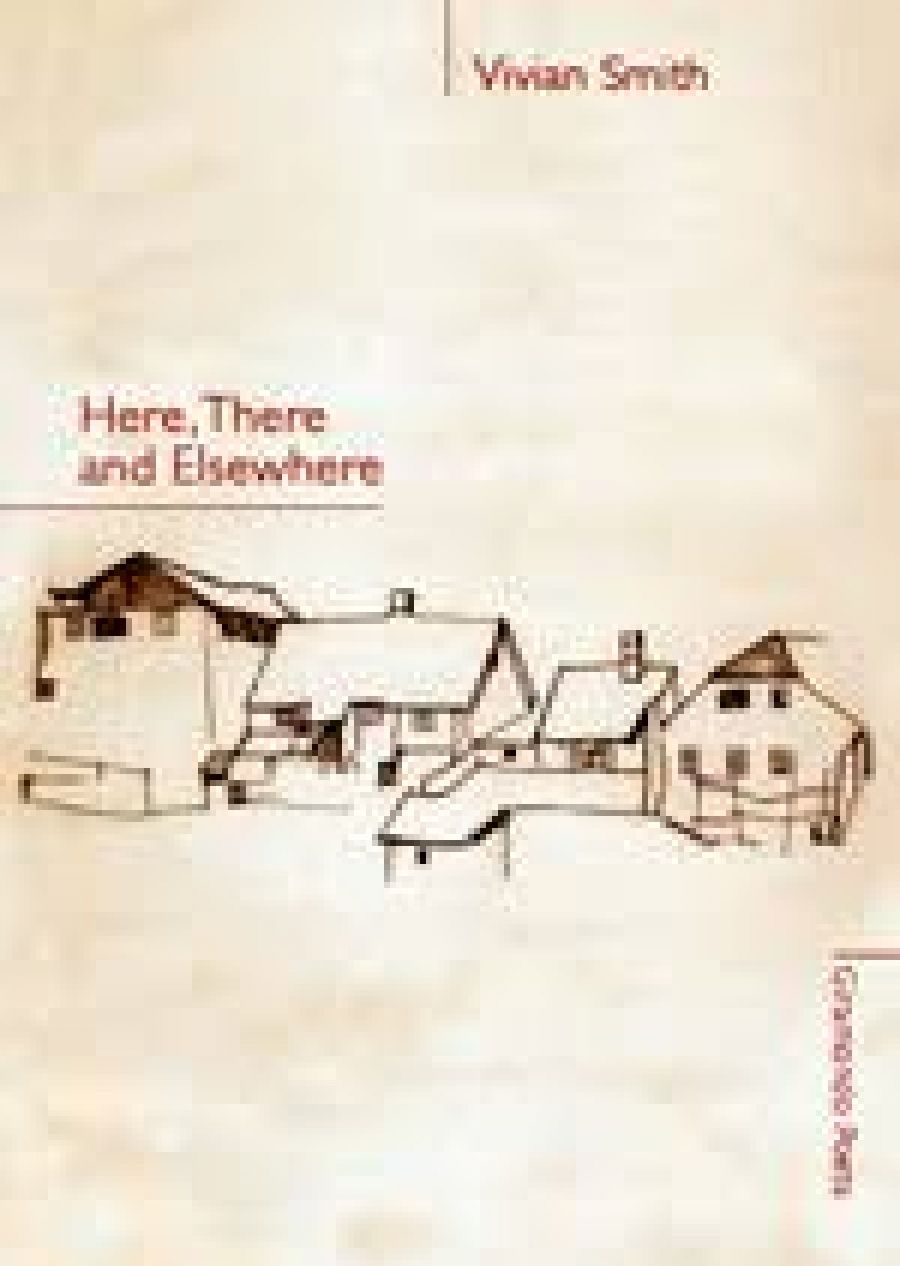
- Free Article: No
- Contents Category: Poetry
- Review Article: Yes
- Online Only: No
- Custom Highlight Text:
This new book of Vivian Smith’s is really quite a surprise. If it were the case of any other poet approaching his eighties you might think of it as rather a grab bag, knocked together out of odds and ends. It is made up of an imaginary biography of ‘Ern Malley’; another set of sonnets, ‘Diary Without Dates' ...
- Book 1 Title: Here, There and Elsewhere
- Book 1 Biblio: Giramondo, $24 pb, 70 pp, 9781920882815
The surprise (and success) of the book is induced exactly by the degree of relaxation involved; even the title, compared with those of his earlier books, seems relaxed to the point, almost, of being throwaway. Smith’s poetic history is a complicated one. He seems to have found a voice and manner very early and never really strayed from them. I know it is a cheap critical trick, but comparing the first and last poems of his New Selected Poems(1995), reveals them to be remarkably consonant. They are of identical length, of the same tetrameter quatrains with second and fourth line rhymes. I thought at the time of that book’s publication that this was probably a deliberate trap on Smith’s part, a way of making fun of critics who cannot see the subtle cross-career changes (the last poem is much more open-ended spiritually, for example), but it remains a revealing fact.
He seems to have been a poet who decided early on what his poetry did best and stuck to it. His excellent and much-anthologised ‘At an Exhibition of Historical Paintings, Hobart’ deals with a theme that would be an inevitable part of his Hobart origins, but which is now part of a wider interest in post-colonial art. Yet it is written in dry quatrains that finally seem only wry. The three larger meditations at the end of An Island South (1967) seem suitably stately but, in the end, rather uncomfortable, and Smith remains someone who exploits the possibilities of a very limited palette: like a composer who writes, say, only violin sonatas.
But the conception of the Ern Malley sequence is not at all dry – in fact it is, dramatically, very rich. We read it first as a set of poems by a real Ern Malley who had, himself, tricked Max Harris by getting his sister to pretend he was dead and send off the hoax poems. Ern, meanwhile, struggling with his own homosexuality, ‘disappeared and lived on quietly / the backwater life he needed’. But it is a more complex, Borgesian sort of narrative than that, and one suspects that there is a little Malley-like joshing going on behind it.
The eight sonnets are, for example, imagined to be found among the papers of the ‘lamented writer’; but that is a very equivocal phrase and doesn’t specifically identify Ern. They could just as well be the papers of James McAuley, Harold Stewart, or even Smith himself. They are all written in Smith’s own style, as though, if there were a ‘real’ poet behind the hoax poems, he might sound a lot like Vivian Smith. It is quite possible, even, that the sequence is a playful exploration of Stewart’s comment that one day it would be proven that he and McAuley were merely figments of Ern Malley’s imagination. Ern’s homosexuality might be a sharp dig at Cassandra Pybus’s biography of McAuley (1999), which suggested that his torments may have derived from a repressed homosexuality. At any rate, the final poem – which is about how paintings can be interpreted differently – gives us fair warning that we should not read these poems simplistically: ‘and paintings say what only paintings say.’
The rest of the poems are good, spare examples of Smith’s style, inclining towards the elegiac, celebrating relationships cut off by death or mental decline by someone who is himself ‘hoping to escape complete attrition’. One of the recurrent moves of Smith’s poetry has always been the journey back to Hobart from his base in Sydney. It embodies all sorts of personal themes: a revisiting of youth, a revisiting of his first poems ‘looking for direction’, a revisiting of the discoveries of contemporary European art and French as a culture and a language.
The two prose pieces that conclude the book are (again) quite a surprise. While, on the surface, they look like, respectively, memoir and travel piece, they benefit from inclusion in the book because they resonate so well with Smith’s larger obsessions. His visits to Neruda’s houses show a brilliant eye for location and a sensitivity to the collector’s museums he finds there. It reminds him, surprisingly, of Kenneth Slessor, and it also recalls one of the poems from Here, There and Elsewhere, which says of the way we try to make sense of our lives, ‘Others have their documents, their trees … all I have are images’.
It is also intriguing when a poet best known, perhaps, for a poem about the naïve painters of Hobart writes about the exhibition of French paintings (the opposite of naïve) that was temporarily shipwrecked on its way to Hobart at the end of 1952. It was eventually saved and mounted in the Tasmanian Museum and Art Gallery, with volunteer labour. Among the volunteers was Smith, who found himself carrying a Miró and a Vlaminck up the stairs. This piece is about contact, but also, with a glance at the Ern Malley affair, pleads for Australian artists to learn from and use ‘what was brought to them from overseas’. That is the way to combat ‘entropy and stagnation’. There is a lot of Smith’s poetry and life there.


Comments powered by CComment